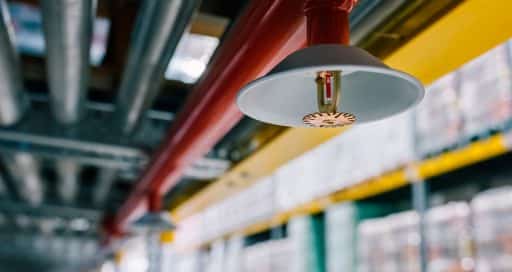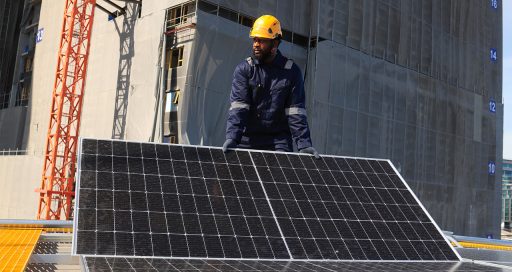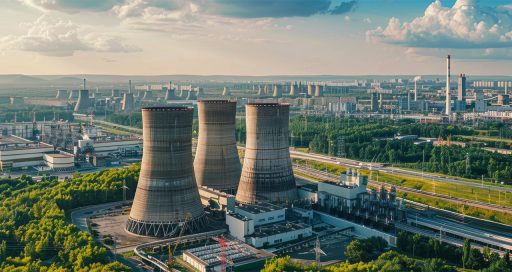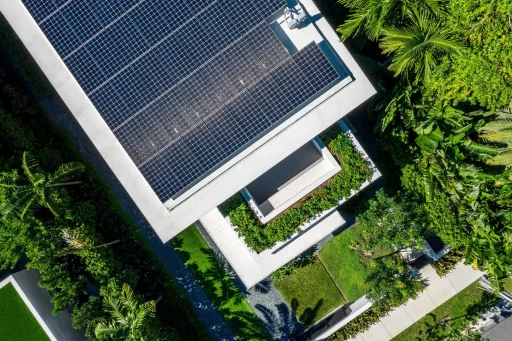From factories and warehouses to commercial premises and healthcare facilities – fire safety measures must be tailored to every situation and building type. Each case requires an ad hoc installation and specific expertise.

Sprinkler placement is determined by the risks and the class of products being stored.
Every building needs fire protection solutions. These are essential safety features for manufacturing, healthcare and the commercial sector.
“Fire safety installations in buildings, especially warehouses and logistics hubs, are subject to extremely strict standards and, of course, the specific requirements of each build”, says Kay Sydow, the business unit manager at Calanbau Brandschutzanlagen, a German company specialising in fire suppression systems and part of VINCI Energies Deutschland Building Solutions.
Implementation of these systems has to follow a precise and rigorous process, starting with an in-depth analysis guided by a series of questions: What type of building is it? What kind of goods are stored there? How are these packaged? Are they high-risk goods? What type of storage is planned (block storage, pallet racking, high-bay storage, double deep racking, etc)?
Kay Sydow adds that this work must be completed before “Proceeding to the classification of fire hazards – light (LH), ordinary (OH) or high (HH) – that will determine the sizing of the sprinkler system”.
Stack effect
Some sites and products require highly specific installations. For example, as Kay Sydow explains, “In facilities with storage over 7.5 metres high, there is a particular risk: a fire may start lower down and spread upward due to the so-called ‘stack’ or ‘chimney’ effect. Hot gases from the fire can heat and ignite previously unaffected material on shelves higher up. It only takes a few minutes for the fire to spread right up to the ceiling, and it then becomes difficult to extinguish”.
“Fire safety installations in buildings, especially warehouses and logistics hubs, are subject to extremely strict standards”
To avoid this type of incident, sprinklers are fitted directly to the racking to extinguish the early-stage fire more precisely and effectively. “Sprinkler placement is determined by the risks and the class of products being stored”, adds Kay Sydow.
Like all her VINCI Energies colleagues specialising in fire safety, Kay Sydow has high-level expertise in this area. “You need knowledge of mechanical engineering, construction technology and business engineering. It’s also important to understand heating, ventilation and climate control technologies, plus sanitation and technical facilities in buildings”.
Examples in Germany and France
Thanks to this expertise, the VINCI Energies teams can provide bespoke solutions for every type of building in France and worldwide. In Germany for example, Calanbau in Darmstadt fitted out a new logistics centre for the food discount chain Penny (REWE Group) in Kronau, Baden-Württemberg, which supplies 275 stores across southwestern Germany.
“We installed a Class 1 sprinkler system, designed in accordance with the VdS HHS 4 directive. Effective fire protection is ensured by 12,200 sprinklers, covering a total floor space of around 50,000 sq. metres divided into six fire compartments. Of these, 5,400 K200-type sprinklers cover the higher fire risks associated with goods stored in plastic media”.
The unique features and challenges of fire protection demand the extra-special diligence that VINCI Energies applies to all its projects. The most recent of these was the first construction phase of a gigafactory for electric vehicle batteries on behalf of ACC (Automotive Cells Company) in Douvrin, northern France.
Nicolas Blumel, CEO of Uxello Travaux Hauts-de-France, a specialist VINCI Energies business unit, explains, “For this 70,000 sq. metre production facility, which will produce its first batteries in late 2023, we will be installing 16,500 sprinkler heads, 41 control stations and around 800 tonnes of pipework, just for the building itself. “We will then install some 17,000 sprinklers to protect the process”.
16/03/2023





